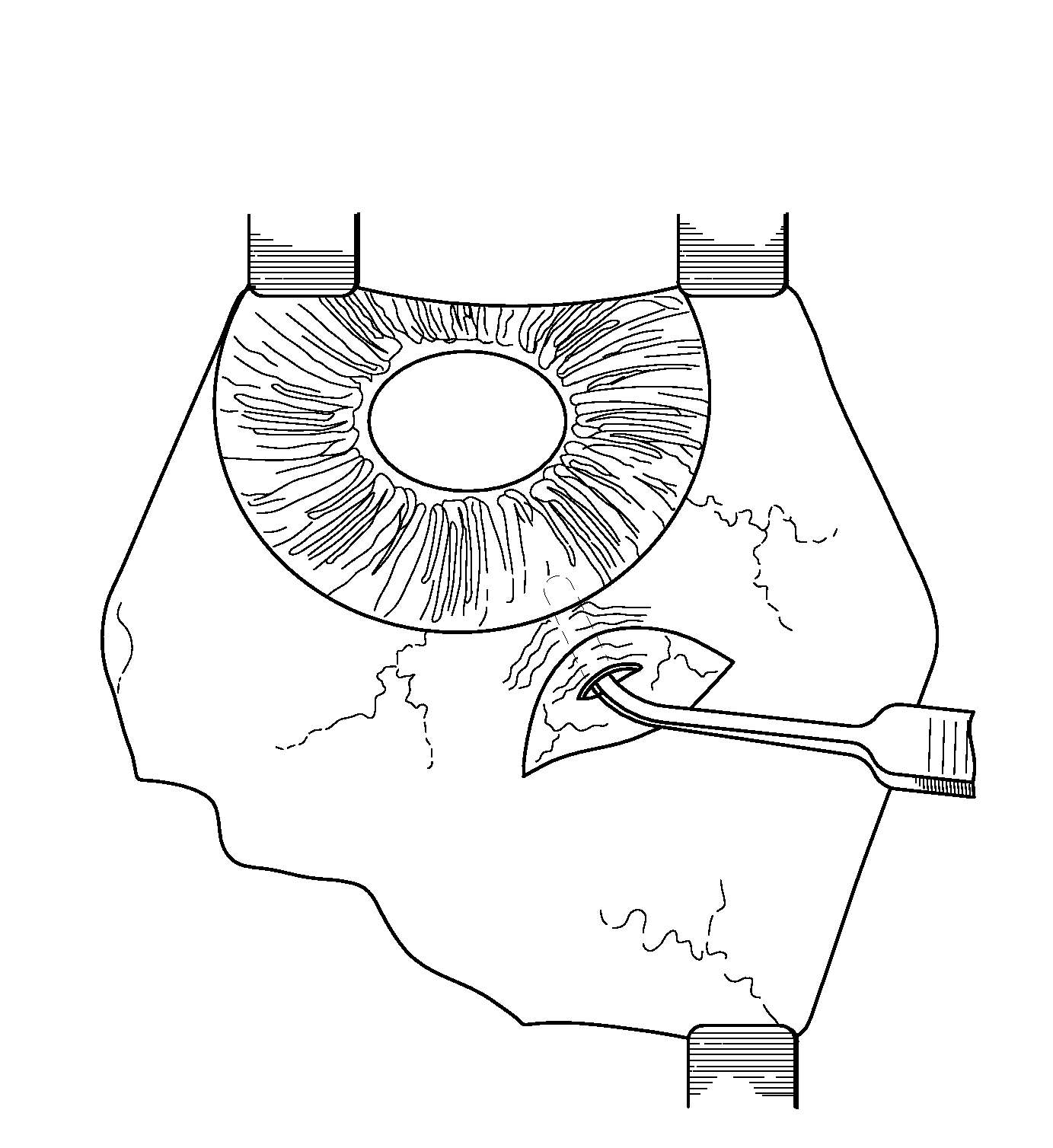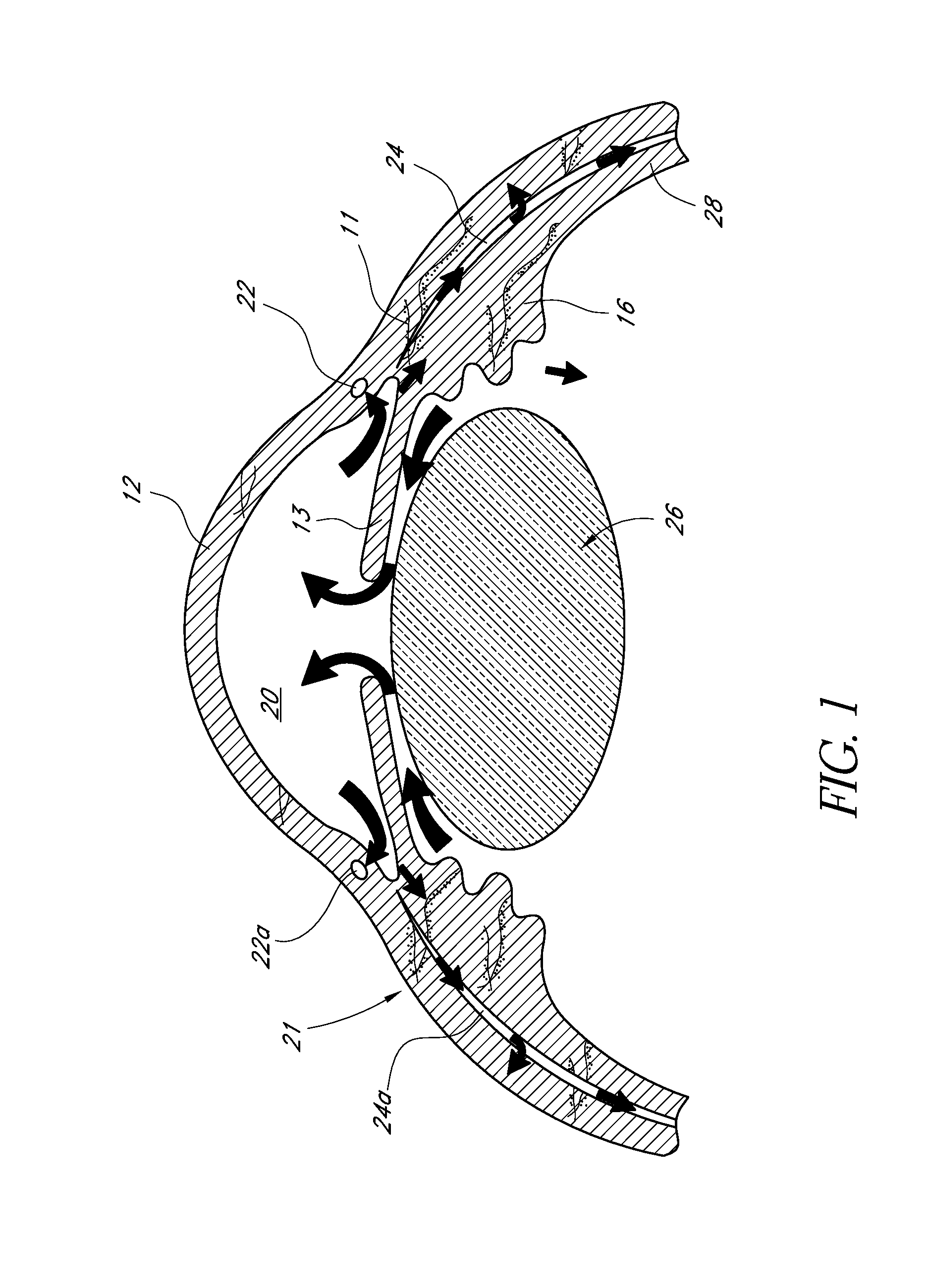Uveoscleral drug delivery implant and methods for implanting the same
a technology of uveoscleral drug and implant, which is applied in the field of uveoscleral drug delivery implant and methods for implanting the same, can solve the problems of affecting the treatment effect of glaucoma drugs, patients may suffer substantial blindness if untreated, and sometimes associated with significant side effects of drug therapies for glaucoma, so as to reduce intraocular pressure and small cross section
- Summary
- Abstract
- Description
- Claims
- Application Information
AI Technical Summary
Benefits of technology
Problems solved by technology
Method used
Image
Examples
Embodiment Construction
[0057]An ophthalmic implant system is provided that comprises a drug delivery implant, which can include a shunt, and a delivery instrument for implanting the drug delivery implant. While this and other systems and associated methods are described herein in connection with glaucoma treatment, the disclosed systems and methods can be used to treat other types of ocular disorders in addition to glaucoma.
[0058]FIG. 1 illustrates the anatomy of an eye, which includes the sclera 11, which joins the cornea 12 at the limbus 21, the iris 13 and the anterior chamber 20 between the iris 13 and the cornea 12. The eye also includes the lens 26 disposed behind the iris 13, the ciliary body 16 and Schlemm's canal 22. The eye also includes the uveoscleral outflow pathway 24a, which defines the suprachoroidal space 24 between the choroids 28 and the sclera 11.
[0059]In embodiments that include the shunt, the shunt, following implantation at an implantation site, can drain fluid from the anterior cha...
PUM
| Property | Measurement | Unit |
|---|---|---|
| Length | aaaaa | aaaaa |
| Pressure | aaaaa | aaaaa |
| Molecular weight | aaaaa | aaaaa |
Abstract
Description
Claims
Application Information
 Login to View More
Login to View More - R&D
- Intellectual Property
- Life Sciences
- Materials
- Tech Scout
- Unparalleled Data Quality
- Higher Quality Content
- 60% Fewer Hallucinations
Browse by: Latest US Patents, China's latest patents, Technical Efficacy Thesaurus, Application Domain, Technology Topic, Popular Technical Reports.
© 2025 PatSnap. All rights reserved.Legal|Privacy policy|Modern Slavery Act Transparency Statement|Sitemap|About US| Contact US: help@patsnap.com



